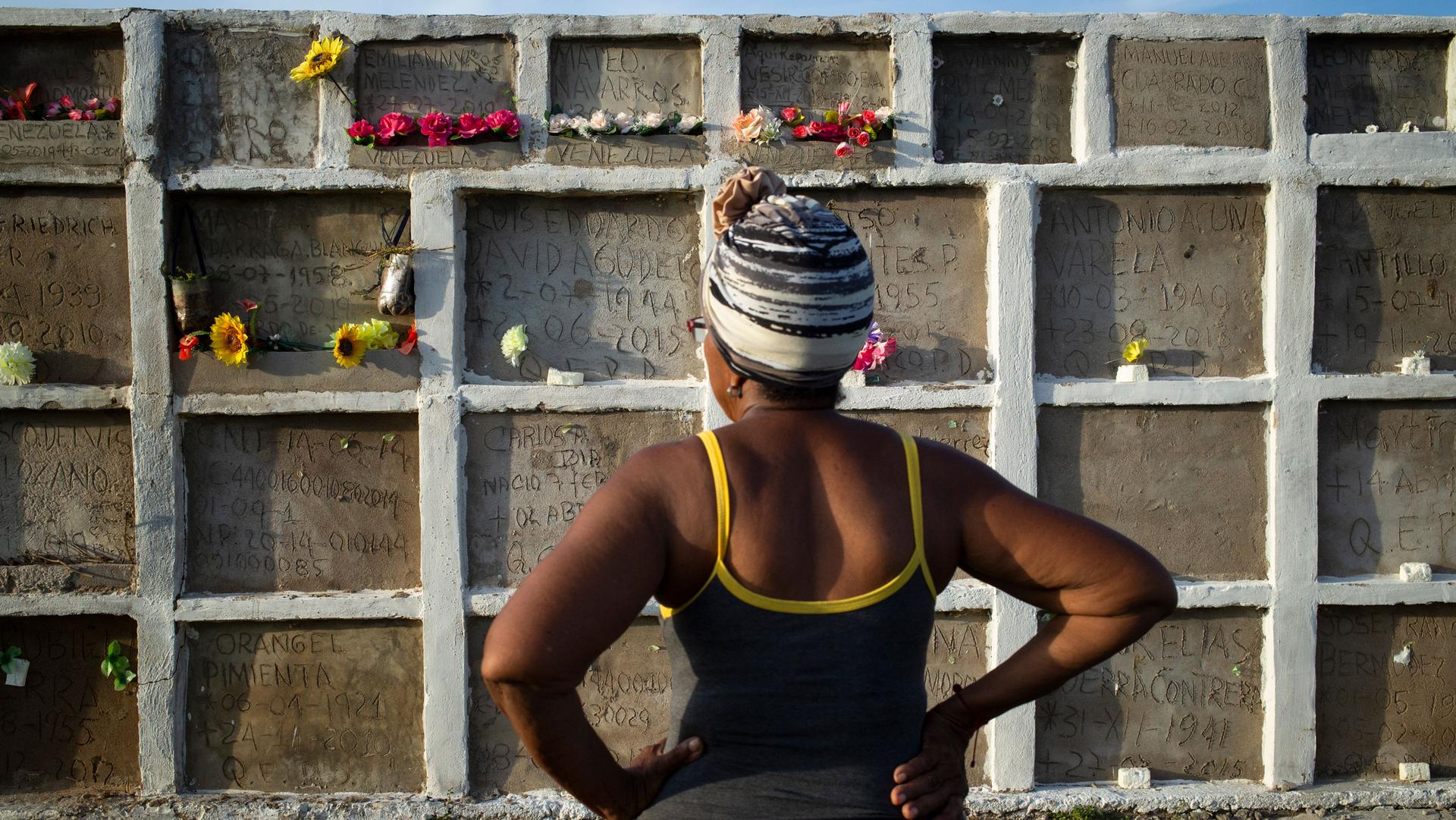Early on Sunday morning, two police officers stood by the side of the road and motioned Sonia Bermúdez to pull over her pick-up truck and hand them her documents. It’s the kind of routine identity check that police carry out in this border region of La Guajira, Colombia, but Bermúdez was surprised.
“Don’t you know me? I’m the crazy one that buries the dead.”
“Don’t you know me? I’m the crazy one that buries the dead,” she said, as she reached for her identity card. She was on her way to build graves, but sometimes she travels with a coffin in the back of her truck, medical release papers in hand, with the family of the deceased squeezed tightly beside each other in the truck that follows behind her.
As she drives around this provincial desert city, often at a haltingly slow pace, she stops at corner stores and traffic lights to speak to people who know her. And Bermúdez, a 64-year-old who has built a reputation as the woman who buries Venezuela’s poorest migrants, is someone who everyone knows around here.
Bermúdez set up her cemetery on the outskirts of town 20 years ago, when she became concerned there was no one really caring for the people who died as unidentified “no names,” victims of Colombia’s 50-year conflict or from drug-related violence.
But as the economic and political crisis in neighboring Venezuela has heightened, the profile of the people she inters at her Gente Como Uno, or People like Us cemetery on the outskirts of Riohacha, has changed: Now, Bermúdez buries mostly migrants and refugees from Venezuela, the troubled state next door.
Related: As Venezuela’s crisis worsens, thousands flee to Colombia
“I started to bury Venezuelans in May of 2017 when the migration started,” Bermúdez said, dressed in tight jeans and with a headband wrapped around her cropped hair. “There was eight that year. The next year it was 20, or 22. Last year, there were 60 or 70 people.”
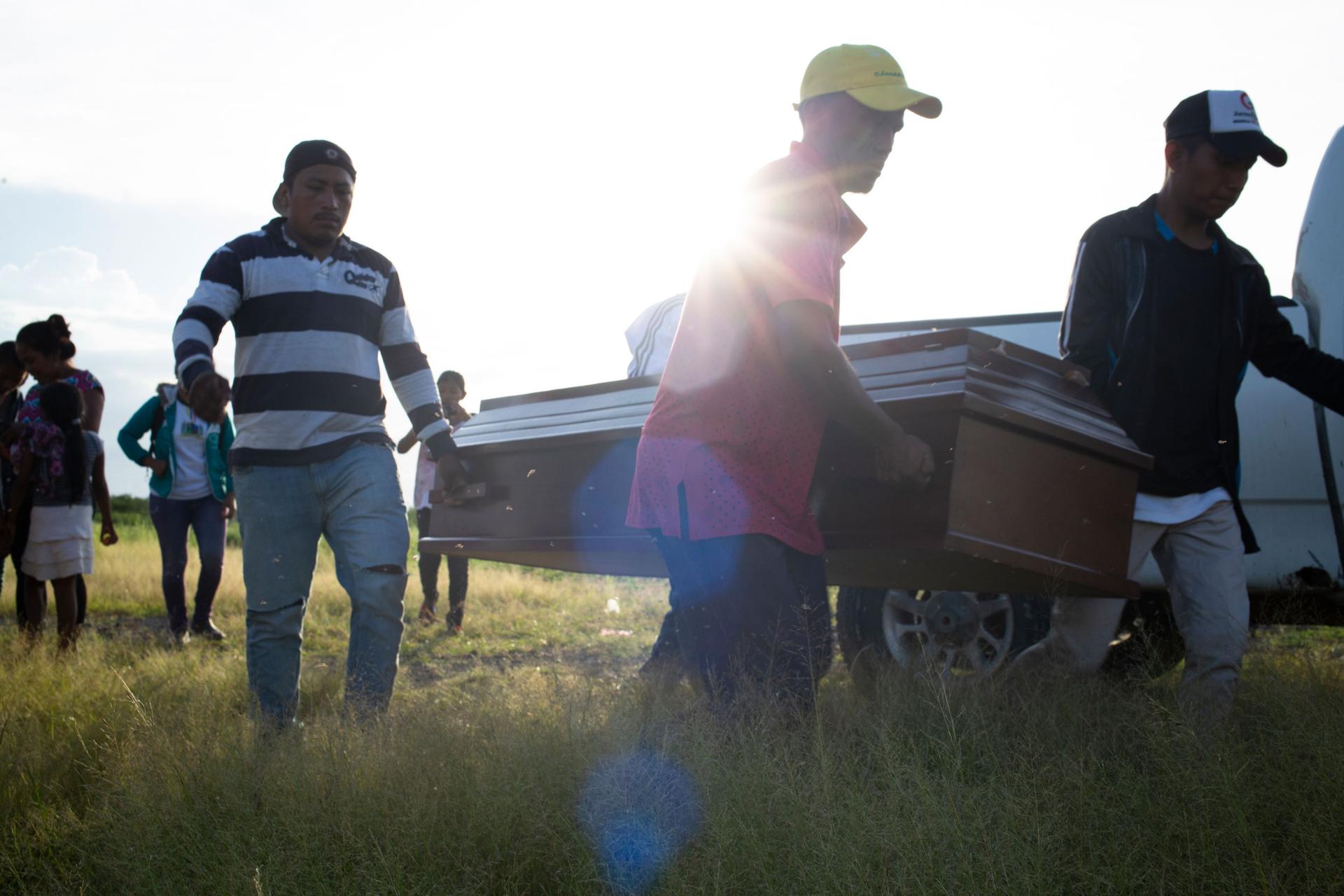
In her 124-acre plot, the dust flies up when she drives in, and a lone tree in the corner provides the only shade. A goat wanders through the scrubland besides the concrete tombstones that list the names and dates of the deceased.
“This person was Venezuelan, this one, too, and this one,” she said, working down the row, listing the various reasons why the people buried in her cemetery died. “This person died of natural causes, this one had a heart attack,” she said. In the middle of the row is the grave of a baby who died from bronchopneumonia, with its ledge filled with biscuits, a lollipop and a bottle of milk left by her parents.
The last burial she carried out was for a one-year-old child from Venezuela, whose mother fainted as Bermúdez filled the tomb. She had to take the mother to the hospital for treatment, so now, days later, she returned to finish the child’s grave.
Sweat formed in beads on her forehead as she squatted down and scraped “Venezuela” into the hard concrete so that when the time comes, the families of the migrants she has buried here can come and take their remains back home.
Most days she comes here to the cemetery to build the tombs. There’s a large pile of sand in one section, and she stands on top of one of the burial tombs scraping cement from a bucket to build the next grave with a workman. The sun is relentless, the earth orange, grey and bone-dry. An occasional hot breeze moves the air slightly, and the odd car whizzes past, but mostly the sounds are those of the trowel scraping of the concrete or the hum of crickets.
“My kids say they don’t know what I’m made of,” Bermúdez said, who took a break and sipped from a plastic cup of Coca-Cola. “But each human has a purpose: my role was this, to give a dignified burial to the dead. If you feel it, what can you do.”
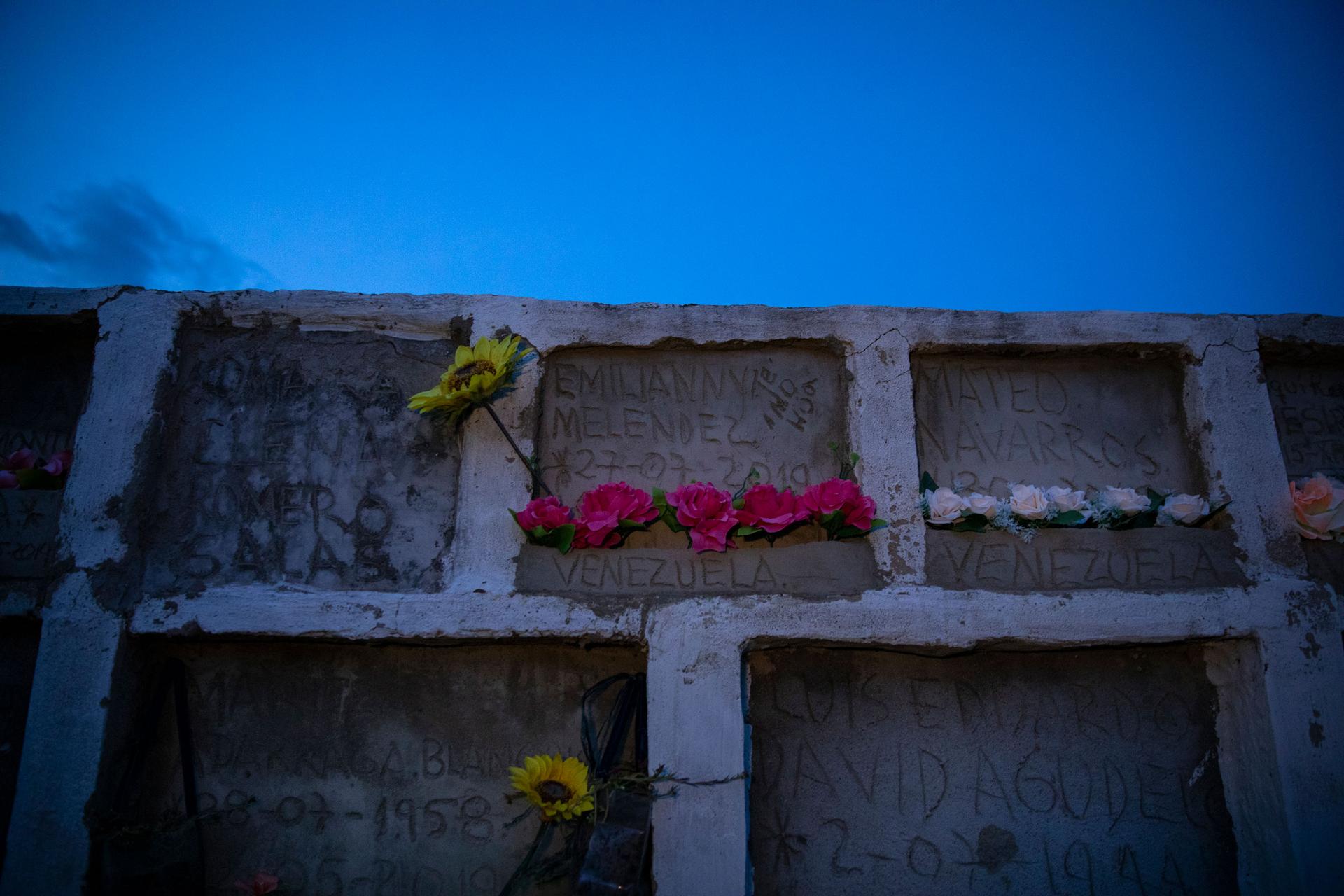
A decent burial
Bermúdez spent her working life at Colombia’s Medicina Legal forensic service. Before that, her father was a guard at the city’s central cemetery, so she spent her childhood playing among the grand mausoleums and marble tombstones that line the passageways.
Today, in her home, she keeps a pile of plastic-wrapped wood coffins piled on one side of the living room, near a scattering of marble statues peculiarly reminiscent of a cemetery. She lives and breathes for the dead, calling them mis muertos or “my dead,” and believes that everyone deserves a decent burial regardless of their origins or financial state.
Her cemetery was legalized in 2007 and she now receives funding from the local Riohacha authority for her work. She also gets handouts from doctors at the local hospital who are grateful that they can call her to come and take away the unclaimed and the poor.
“When patients die in the hospital, or children, the families phone her.”
“When patients die in the hospital, or children, the families phone her,” said Lacides Moscote, a doctor at the Nuestra Senora de los Remedios hospital in Riohacha, which has seen a huge increase in the number of Venezuelan patients seeking medical care since the crisis.
Related: Hospitals on Venezuela border ‘turning into cemeteries for migrants’
“These are families that don’t have the money to pay for a private cemetery. And the Central Cemetery is totally full. She does an incredible job with the dead,” Moscote said.
Bermúdez has also received funding from the United Nations High Commissioner for Refugees (UNHCR), who supported her work with migrants for a two-year period, in an attempt to address the lack of local capacity to bury migrants from Venezuela.
“We started funding as a provider of last resort, because the local government is not doing it, and because no other NGOs [nongovernmental organizations] or UN NGOs were doing funeral assistance,” said Federico Sersale, the UNHCR chief for the region. “There’s two reasons why it was important: one is a public health issue, where the bodies were staying in the morgue for a month or two months in some cases. The other was so that Venezuelan refugees had access to a decent burial.”
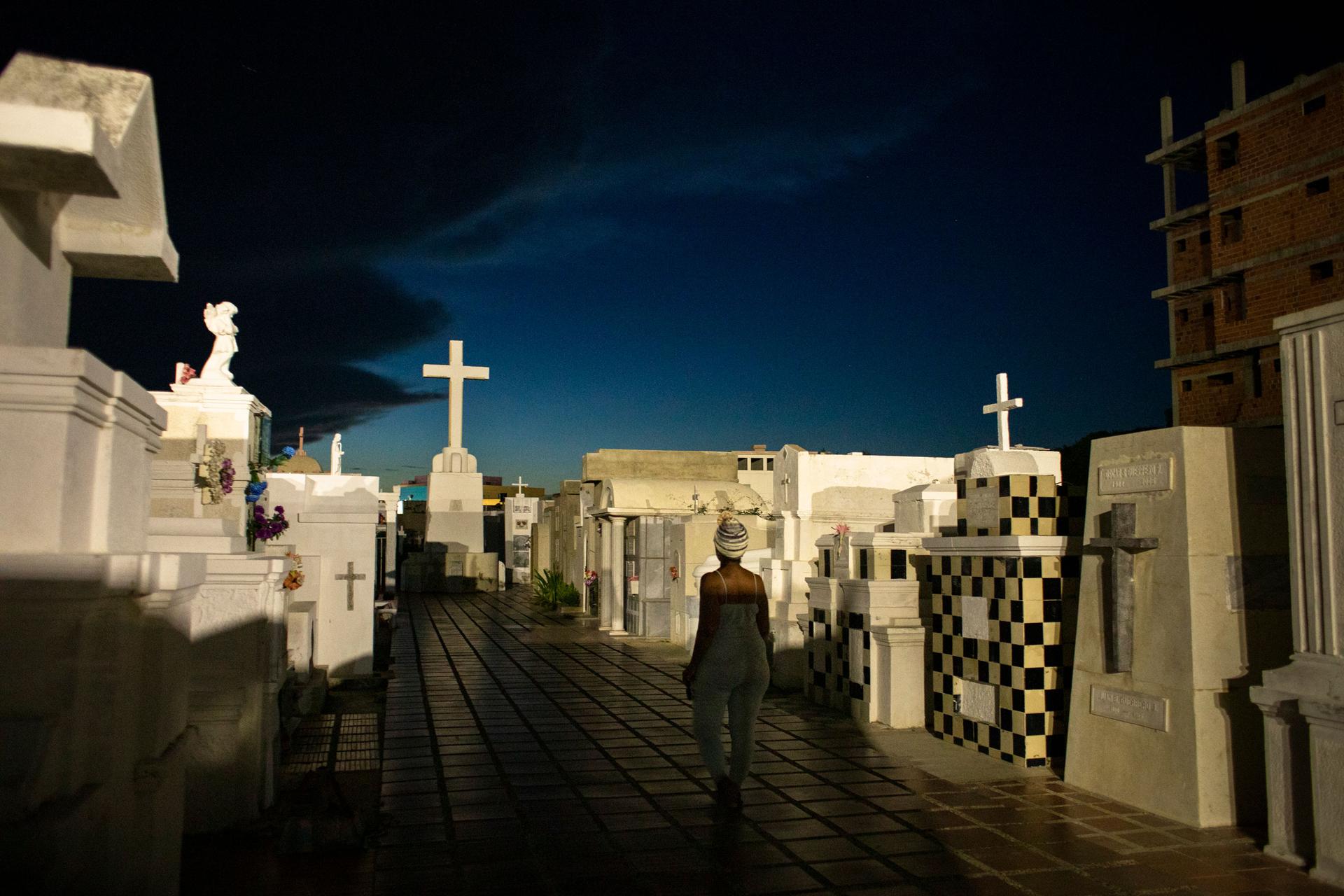
But Bermúdez said financing is always precarious. When sufficient funding fails to arrive from the local authorities, local newspapers cover her protests: Bermúdez has made a name for herself taking corpses to the mayor’s office to protest a lack of funding to bury migrants and refugees who die in the territory.
Claudia García Fino, the national director of Medicina Legal, said that local authorities are bound by law to cover the costs of a burial, even of non-identified and foreign victims. But she added that the diplomatic shutdown between Venezuela and Colombia, — which followed a failed attempt by the Venezuelan opposition leader Juan Guaidó to get aid into the country in February last year — has led to difficulties in identifying the deceased and knowing how to process their deaths.
Related: Defiant Maduro blocks humanitarian aid at Colombian border
“The embassy used to say, these are the fingerprints of said person…We would repatriate with the diplomatic mission,” she said. “With Venezuela we don’t have relationships and that makes this more complicated.”
“The embassy used to say, these are the fingerprints of said person … We would repatriate with the diplomatic mission,” she said. “With Venezuela we don’t have relationships and that makes this more complicated.”
Colombia currently hosts 1.6 million of the 4.7 million migrants and refugees that have left Venezuela — more than any other nation. That is putting huge pressure on healthcare, education and public services. And, of course, on services for the dead.
At Medicina Legal the number of investigations and autopsies into the deaths of Venezuelans doubled between 2018 and 2019, from 587 to 1,073 last year. While this figure only shows those suspicious or violent deaths that receive an autopsy examination, the figures show the stark impact of an increasing population on the demand for core state services.
Related: Colombia’s patience with Venezuelan migrants wears thin
In Riohacha, one of the border regions receiving the highest numbers of migrants passing through, Bermúdez says she is the one filling in the gap.
“No one cares what happens to these dead people. But death is more certain than life, isn’t it? You say you are going to live forever and people will think you’re mad. So why does death not matter?”
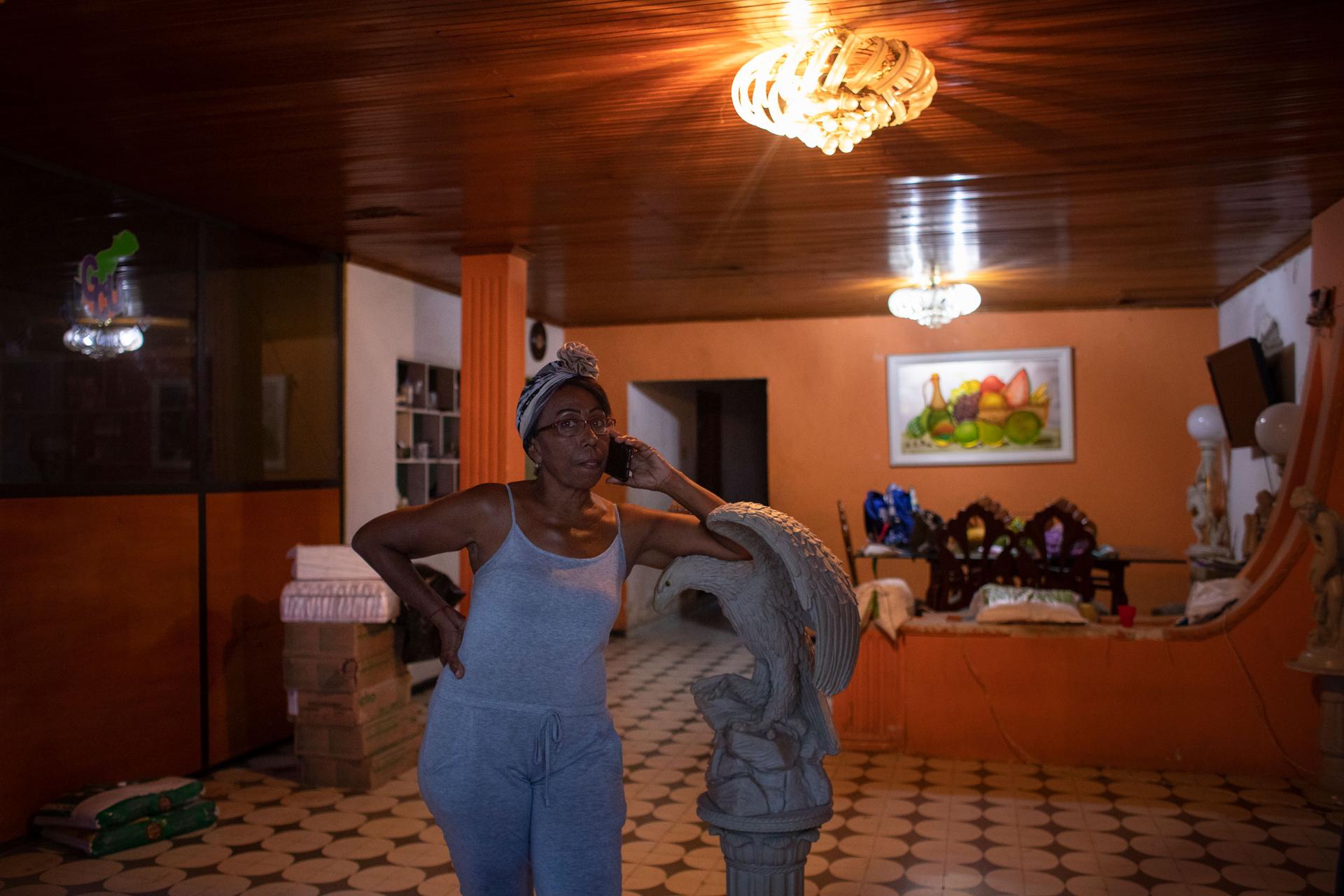
When she receives a phone call — from the hospital or from a migrant’s family member — she collects the body, often providing the coffin as well, and brings the corpse to the cemetery.
There the family prays, saying an “Our Father,” or an “Ave Maria,” while Bermúdez sprinkles holy water from a local priest on the coffins.
“The hardest moment is when I finish closing off the tomb. We write the person’s name, bring flowers,” she said, pointing to the bright orange, blue and yellow artificial flowers that sit on each tomb.
“Sometimes I do wonder what kind of crazy lady would do a job like this,” she said. “But the satisfaction comes from the fact that a family knows where their loved one is. That they can come at any time and visit them. They know their loved ones are cared for because someone is visiting them every day. This is a way of building peace.”
Editor’s note: The reporting for this story was supported by the International Women’s Media Foundation.
Our coverage reaches millions each week, but only a small fraction of listeners contribute to sustain our program. We still need 224 more people to donate $100 or $10/monthly to unlock our $67,000 match. Will you help us get there today?
